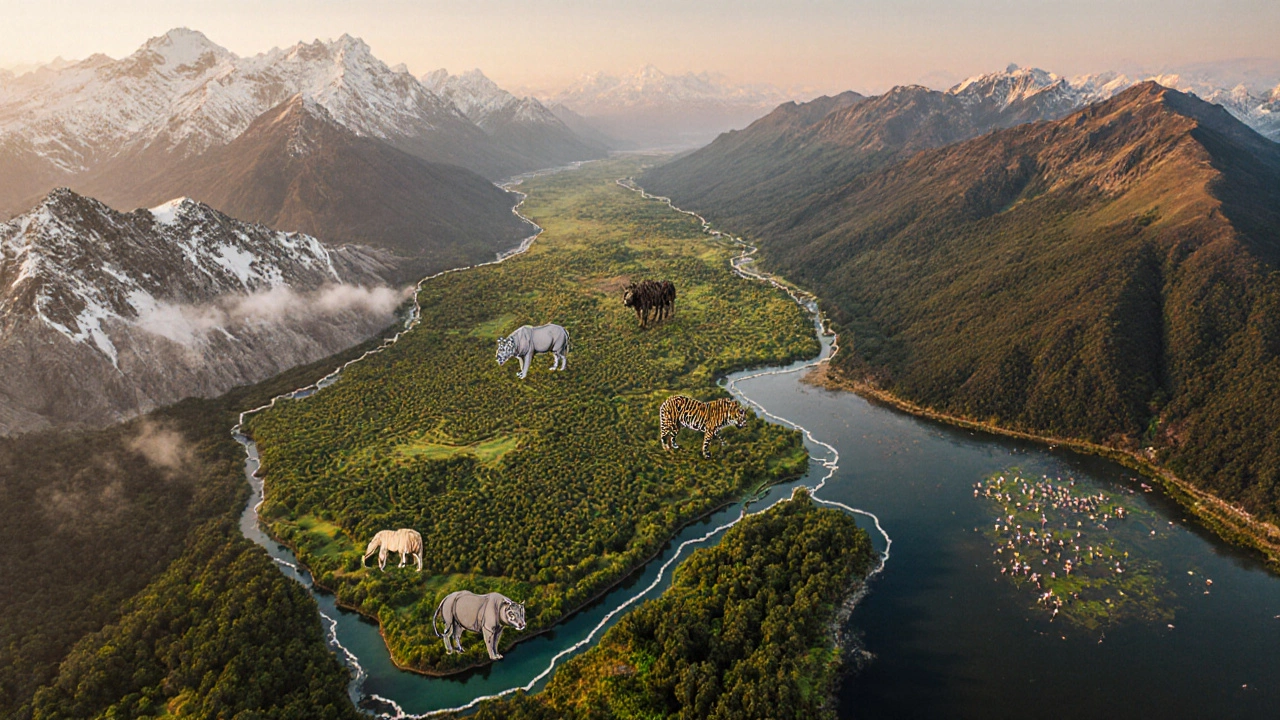SEARCH
Indian Wildlife Heritage – Discover the Heartbeat of India’s Wild Spaces
When talking about Indian wildlife heritage, the living tapestry of species, habitats, and cultural ties that connect people to India’s wild realms. Also known as India’s natural legacy, it weaves together centuries of reverence, modern science, and tourism. This heritage isn’t just about cute animals; it’s about ecosystems that sustain millions of lives, including ours. Below you’ll see how the mix of tradition and protection creates a unique travel experience.
Key Pillars of the Heritage
The backbone of Indian wildlife heritage rests on several pillars. First, wildlife sanctuaries, protected zones where native species roam free under strict anti‑poaching rules act as safe havens for endangered creatures like the Bengal tiger and Indian rhinoceros. Next, national parks, large, often UNESCO‑listed landscapes that preserve entire ecosystems, from the Himalayas to the Western Ghats showcase biodiversity hotspots and draw scientific research worldwide. A third pillar, conservation efforts, community‑driven programs, wildlife corridors, and government policies aimed at restoring habitats, keep populations stable and habitats healthy. Finally, eco‑tourism, responsible travel that supports local economies while minimizing environmental impact links visitors directly to these natural treasures, turning admiration into action.
These entities interact in clear ways: wildlife sanctuaries provide the core protection that feeds into broader national park networks; conservation efforts supply the science and funding that make both sanctuaries and parks viable; eco‑tourism generates the revenue that sustains those projects. In practice, a trek through Jim Corbett National Park (a national park) often includes a night at a locally run eco‑lodge, which funds anti‑poaching patrols in nearby sanctuaries. This loop shows how every piece supports the others, creating a resilient system that benefits wildlife and people alike.
Whether you’re planning a jungle safari, a bird‑watching trek, or simply want to understand how India keeps its wild heart beating, the articles below cover budgeting for remote safaris, comparing zoo versus sanctuary experiences, and tips for responsible wildlife travel. Dive in to see how you can explore, learn, and contribute to preserving India’s priceless wildlife heritage.

The Seven Natural Heritage Sites in India: A Complete Guide
Discover all seven UNESCO natural heritage sites in India, their unique wildlife, locations, and how to visit responsibly.
Continue reading